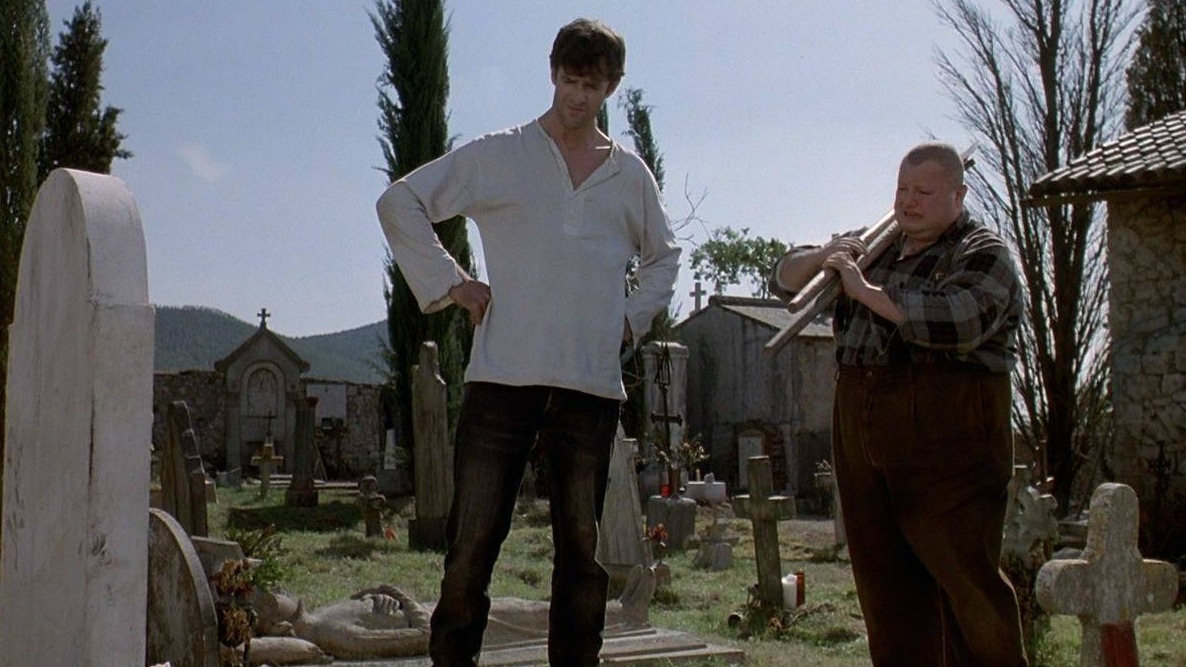Cemetery Man (1994)

Released in 1994 and directed by Michele Soavi, “Cemetery Man” (Italian: “Dellamorte Dellamore”) is a cult classic that defies conventional genre boundaries, blending elements of horror, dark comedy, and existential drama into a uniquely atmospheric and thought-provoking film experience.
Set in a small, remote town in Italy, “Cemetery Man” introduces us to Francesco Dellamorte, played by Rupert Everett, the caretaker of the local cemetery. Alongside his loyal assistant Gnaghi, played by François Hadji-Lazaro, Dellamorte’s life takes a bizarre turn when he discovers that the dead buried in the cemetery come back to life as zombies exactly seven days after their death.
The film navigates through various episodic vignettes, each centered around Dellamorte’s encounters with the living dead and the existential crises that ensue. As he grapples with his peculiar predicament and the monotony of his existence, Dellamorte’s perception of reality begins to blur, leading to surreal and often darkly humorous situations.

At its core, “Cemetery Man” delves into profound themes of existentialism and mortality. Dellamorte’s role as the caretaker of the dead mirrors his own sense of detachment from the world of the living. His interactions with the reanimated corpses prompt philosophical reflections on the nature of life, death, and the meaning of existence itself.
Michele Soavi infuses “Cemetery Man” with a darkly comedic tone that juxtaposes the macabre with moments of absurdity and satire. The film’s humor arises from its witty dialogue, bizarre scenarios, and the juxtaposition of horror tropes with existential musings, offering a unique blend of laughs and chills.

Visually, “Cemetery Man” captivates with its hauntingly beautiful cinematography and atmospheric mise-en-scène. The cemetery itself becomes a character, shrouded in mist and moonlight, evoking a sense of Gothic romanticism that enhances the film’s eerie ambiance and surreal undertones.
Central to the film is Dellamorte’s complex character, portrayed with depth and nuance by Rupert Everett. His evolving relationship with Gnaghi, the mute assistant who communicates through grunts and gestures, adds a touch of humanity amidst the supernatural chaos. Their bond becomes a poignant anchor in a world where reality and fantasy collide.
“Cemetery Man” has garnered a cult following for its unconventional storytelling and thematic richness. It has been praised for its inventive narrative structure, imaginative visuals, and Rupert Everett’s compelling performance. The film’s exploration of existential dread and the absurdity of life resonates with audiences who appreciate its blend of horror and dark humor.

Over the years, “Cemetery Man” has left a lasting impact on horror cinema, inspiring filmmakers and artists with its fearless exploration of the human condition. Its portrayal of a protagonist grappling with existential crises amidst a backdrop of supernatural occurrences continues to intrigue and provoke discussion among cinephiles and scholars alike.
In conclusion, “Cemetery Man” (1994) stands as a testament to the power of cinema to provoke thought, evoke emotions, and challenge conventions. Through its blend of horror, dark comedy, and existential drama, the film invites viewers on a mesmerizing journey into the depths of the human psyche and the mysteries of life and death.
Prepare to be enchanted and unsettled as you enter the haunting world of “Cemetery Man,” where laughter and terror walk hand in hand, and where the line between reality and fantasy is as thin as the veil between life and death itself.










